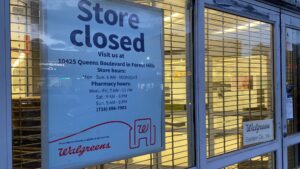The Dividend Dilemma: Navigating the Walgreens Boots Alliance Suspension
At Extreme Investor Network, we understand that the world of investing can often be fraught with challenges—none more so than when dividends are suspended. Recently, Walgreens Boots Alliance (WBA) made headlines for its decision to halt its dividend, a move that has sent shockwaves through the investment community. In this blog post, we’ll unpack what this means for investors, the signals to watch for, and strategies to navigate the turbulent waters of dividend investing.
The Reality of Dividend Suspension
For those holding onto Walgreens Boots Alliance shares, the news of a suspended dividend is particularly disheartening. This decision comes just a year after the company made the significant move to cut its dividend almost in half. Over the past 12 months, WBA shares have plummeted by 56%, largely due to declining reimbursement rates for prescription drugs and a broader slowdown in consumer spending.
As noted by Don Bilson, head of Gordon Haskett’s event-driven research team, the company’s stock price hovering at around $11 signaled that a substantial cut was on the horizon. However, the outright suspension was a stark wake-up call for many investors.
The Broader Picture
Historically, companies that suspend dividends often do so after signaling cash-flow issues. According to Howard Silverblatt from S&P Global, a dividend suspension is typically the last resort, indicating financial distress. This puts shareholders in a tough position—deciding whether to hold on, hoping for the company to rebound, or to cut their losses.
As Kim Abmeyer, CFP and CFA, points out, if generating income was the primary objective of your investment strategy, it may be time to move on. The unfortunate reality is that a suspended dividend can often be the final nail in the coffin for many investors’ confidence in a particular stock.
Red Flags to Watch
Understanding the signs of an impending dividend cut or suspension can empower investors to act before it’s too late. Here are some crucial indicators to look out for:
-
High Dividend Yields: Often, a high yield is a warning sign that the share price is in freefall. In such cases, the sustainability of the dividend becomes questionable.
-
Deteriorating Cash Flow: Companies struggling with cash flow might find it difficult to maintain regular dividend payments.
-
Negative Press: Stay attuned to headlines about companies in your portfolio. Bad news can be a precursor to financial instability.
- Unusual Trading Patterns: Watch for significant drops in stock price or unusual trading activity, which may indicate that insiders are concerned.
At Extreme Investor Network, we advocate for thorough research backed by the principles of sound investing, ensuring you’re always prepared for potential pitfalls.
What to Do After a Suspension
When faced with a dividend suspension, how should an income-focused investor respond? Here are a few strategies you might consider:
Reassess Your Portfolio Goals
Rather than hastily reinvesting in a different high-yield stock, take a step back. Assess your overall income strategy. Are you looking for high yield, or do you need a balanced approach that includes capital appreciation? Engaging with a financial advisor can provide insights tailored to your specific situation.
Diversification is Key
Maintaining a diversified portfolio can safeguard against the volatility of individual stocks. Consider exploring the S&P 500 Dividend Aristocrats ETF (NOBL), featuring companies that have consistently increased their dividends for at least 25 years. These stalwarts include renowned brands like Walmart, IBM, and Coca-Cola, showcasing the resilience that comes with a long-standing commitment to dividend growth.
Perform Due Diligence
Before purchasing any dividend-paying stock, ensure you conduct comprehensive due diligence. Look into:
- Balance Sheet Strength: Scrutinize the company’s financial health.
- Earnings Consistency: Steady earnings can indicate a company is better positioned to maintain dividends.
- Payout Ratio: A very high ratio can be a red flag, indicating the company may struggle to uphold its dividend during economic downturns.
Embrace Alternative Income Sources
Don’t limit yourself to traditional dividend stocks. Explore structured notes, municipal bonds, or high-quality corporate bonds. By integrating alternative income sources, you can enhance your overall income strategy and buffer against market shocks.
Conclusion
The world of dividends can be unpredictable. The recent suspension by Walgreens Boots Alliance serves as a crucial reminder of the importance of due diligence, monitoring, and strategic diversification. At Extreme Investor Network, we empower our readers to take informed steps to protect and grow their investment portfolios, understanding that navigating through market challenges is key to long-term success. Remember, your investment journey is uniquely yours, and we’re here to help guide you every step of the way.
By focusing on in-depth analysis and actionable insights, this blog serves not only to inform but also to equip investors with the tools they need to make smarter decisions in a challenging investment landscape. Stay informed with Extreme Investor Network—your partner in navigating the dynamic world of investing.

